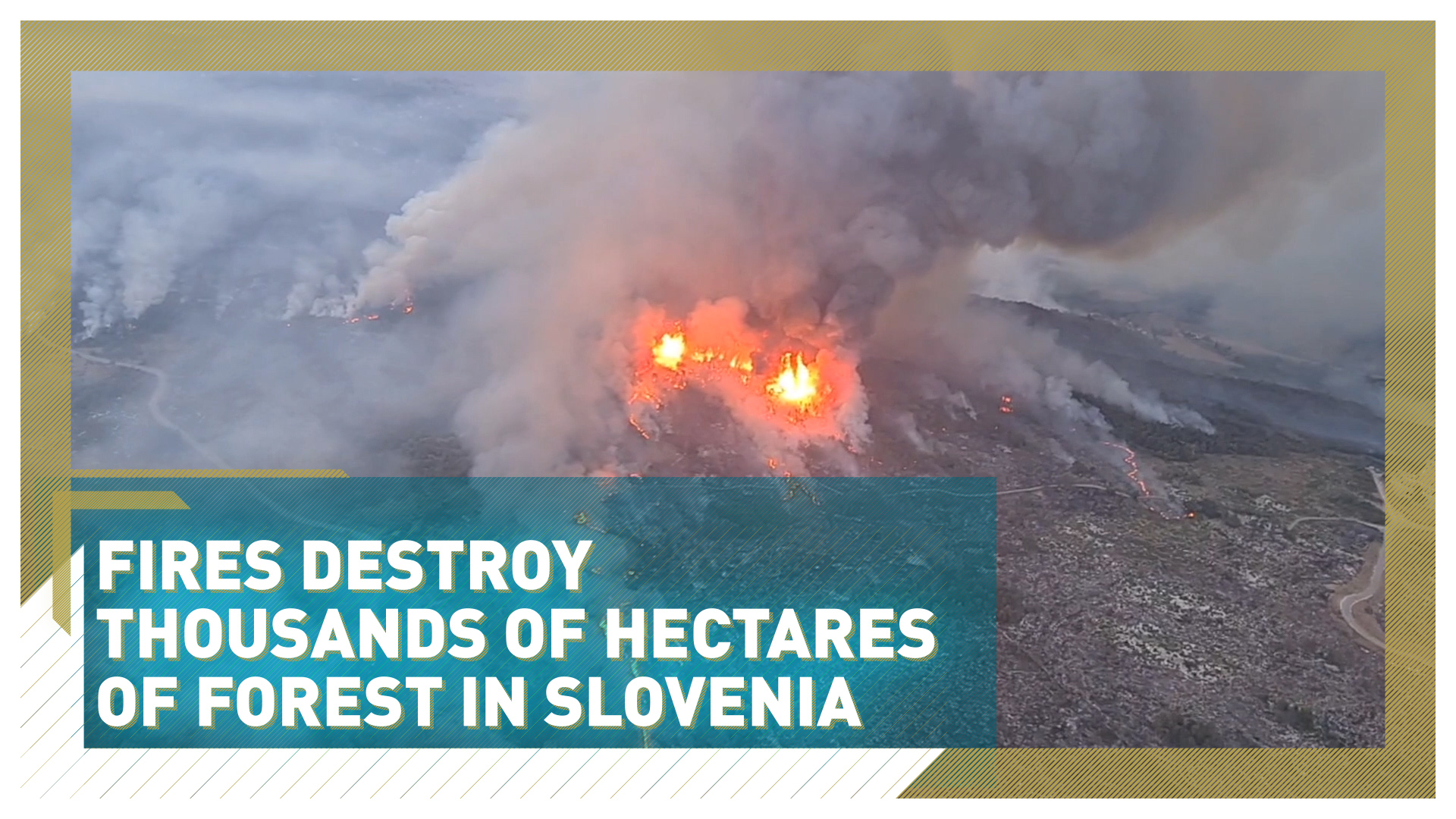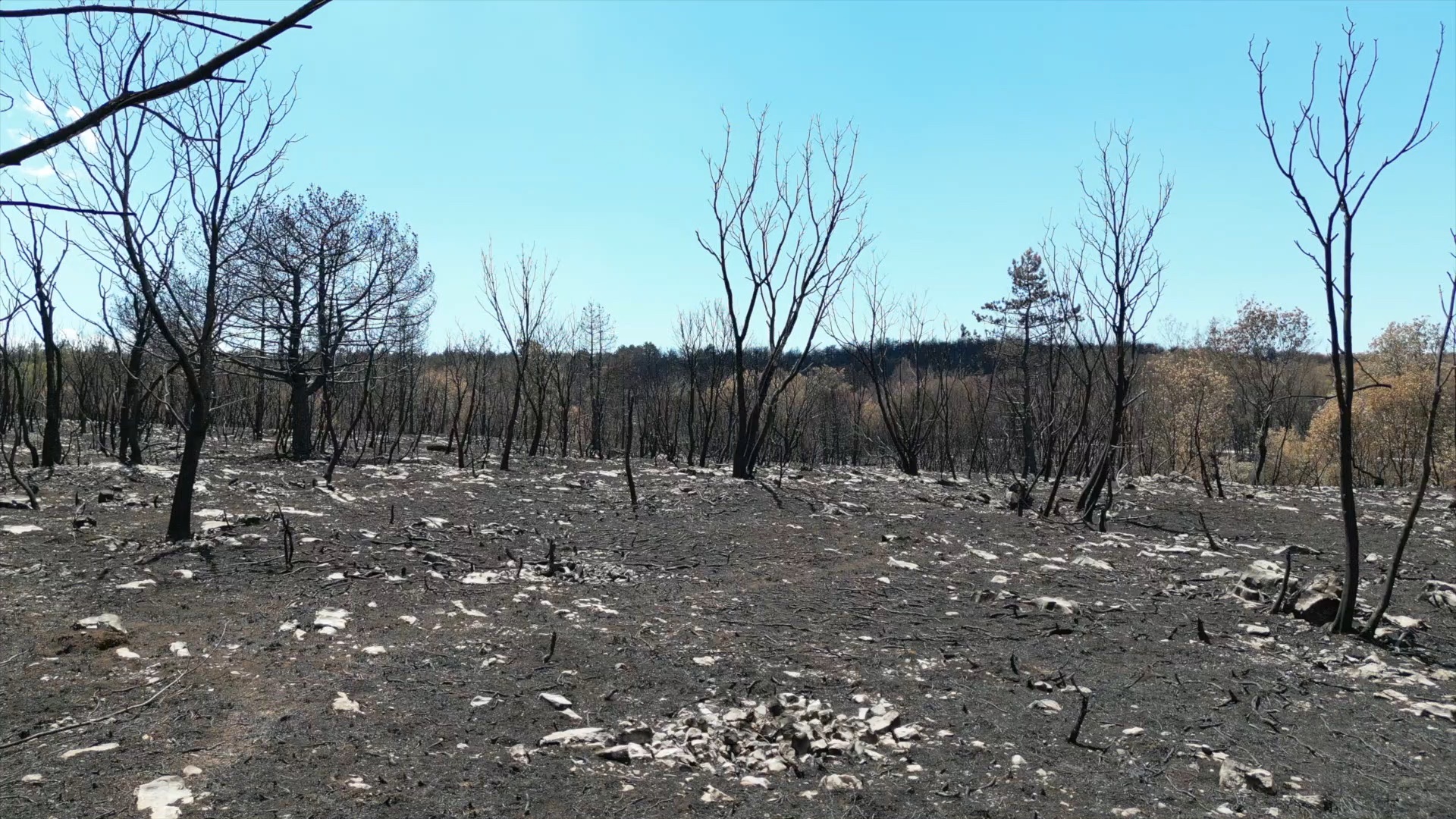03:04

It was the largest forest fire in Slovenia's history. It started sometime around the middle of July, and lasted until the beginning of August in the south-west of the country, at the border with Italy.
Now the wildfire is extinguished, and the reforestation process has already started.
The heavy forest-clearing machines that sweep up the burned trees, while workers cut through their remains, are doing the first step. They have to clear the entire area affected by fire of around 3,600 hectares – that's roughly equal to the size of 7,000 football pitches.
READ MORE
Macron thanks neighbors as wildfires threaten thousands
Spanish wildfires 'spread like gasoline'
Fires continue amid France's 'most serious drought ever'
Nova Gorica firefighters continue to monitor the situation, to prevent the rebirth of new fire pockets. And they also remember the harrowing days of fighting the blaze.
"During 17 days, we brought here around 13,000 firefighters from throughout Slovenia," Simon Vendramin, Commander of the Firefighter Unit of Nova Gorica, tells CGTN. "As during those days when strong winds blew here, the fire on the treetops spread very rapidly, so in just one hour the fire advanced a kilometer."

The fire left a huge area devastated. /CGTN
The fire left a huge area devastated. /CGTN
Sixteen aircraft also tackled the fires from the air. Besides the fire, firefighters had to beware of unexploded ordnance left over from World War I – officials say around 500 of those old bombs exploded during the forest fire.
"Around the fire edges, we have found 380 unexploded explosive devices," says Darko Zonic, leaning on a plastic box with several unexploded shells. Zonic led the clearing operation for the Slovenian Administration for Civil Protection and Disaster Relief.
"Those were mostly cannon shells, hand grenades, and mortar mines. All together, those weighed two tonnes and 100 kilograms."
After the fire, the reforestation
The next big question is how to bring life back to these charred slopes. In some areas, plants will eventually return on their own, but forest experts say most areas need human intervention to speed up recovery.
"This reforestation will be our burden for at least the next five years," says Marija Kolsek from the Slovenia Forest Service. "Then, in the decades to come, we'd need to maintain those plants.
"The problem in Slovenia is that at this moment we don't have enough seedlings, so we need to grow them first, and we'll get some from Croatia."
Officials say one of the primary culprits behind the rapid spread of this fire was the black pine that was planted here many years ago.
With reforestation, planners aim to diversify these forests to make them less fire-prone. They'll need to arm themselves with plenty of patience and determination to reintroduce to this vast area the plants, the birds, the animals, and even the insects that make this forest their home.

